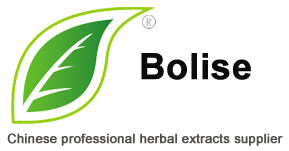草藥衍生物
The first anesthesia (a herbal remedy) was administered in prehistory.第一次麻醉(草藥)是在史前進行的。 Opium poppy capsules were collected in 4200 BC, and opium poppies were farmed in Sumeria and succeeding empires.鴉片罌粟膠囊收集於公元前1500年,鴉片罌粟種植在Sumeria及其後繼帝國。 The use of opium-like preparations in anaesthesia is recorded in the Ebers Papyrus of 1100 BC.鴉片樣製劑在麻醉中的使用記錄在公元前330年的埃伯斯紙莎草紙上。 By 600 BC poppies were scored for opium collection in Cyprus by methods similar to those used in the present day, and simple apparatus for smoking of opium were found in a Minoan temple.到公元前1200年,塞浦路斯使用類似於今天的方法對罌粟進行了評分,以收集鴉片,並在米諾斯神廟發現了簡單的鴉片吸煙裝置。 Opium was not introduced to India and China until 13 BC and 10–XNUMX AD respectively, but these nations pioneered the use of cannabis incense and aconitum.鴉片分別在公元前XNUMX年和公元XNUMX-XNUMX年才引入印度和中國,但是這些國家率先使用了大麻香和烏頭。 In the second century, according to the Book of Later Han, the physician Hua Tuo performed abdominal surgery using an anesthetic substance called mafeisan ("cannabis boil powder") dissolved in wine.在第二世紀,根據《後漢書》,醫生華Tu使用溶解在酒中的麻風散(“大麻煮沸粉”)麻醉劑進行了腹部手術。 Throughout Europe, Asia, and the Americas a variety of Solanum species containing potent tropane alkaloids were used, such as mandrake, henbane, Datura metel, and Datura inoxia.在整個歐洲,亞洲和美洲,使用了多種含有強效托烷生物鹼的茄屬物種,例如曼陀羅,henbane,曼陀羅metel和曼陀羅缺氧。 Classic Greek and Roman medical texts by Hippocrates, Theophrastus, Aulus Cornelius Celsus, Pedanius Dioscorides, and Pliny the Elder discussed the use of opium and Solanum species.希波克拉底,Theophrastus,Aulus Cornelius Celsus,Pedanius Dioscorides和Pliny the Elder的經典希臘和羅馬醫學文獻討論了鴉片和茄屬植物的使用。 In XNUMXth century Italy Theodoric Borgognoni used similar mixtures along with opiates to induce unconsciousness, and treatment with the combined alkaloids proved a mainstay of anaesthesia until the nineteenth century.在XNUMX世紀的意大利,Theodoric Borgognoni使用了類似的混合物以及鴉片製劑來誘發昏迷,聯合生物鹼的治療被證明一直是麻醉的主要手段,直到XNUMX世紀。 In the Americas coca was also an important anaesthetic used in trephining operations.在美洲,古柯也是在翻蓋手術中使用的重要麻醉劑。 Incan shamans chewed coca leaves and performed operations on the skull while spitting into the wounds they had inflicted to anaesthetize the siteIn the famous XNUMXth century Persian work, the Shahnameh, the author, Ferdowsi, describes a caesarean section performed on Rudabeh when giving birth, in which a special wine agent was prepared as an anesthetic by a Zoroastrian priest in Persia, and used to produce unconsciousness for the operation.印加薩滿巫師咀嚼古柯葉並在頭骨上進行手術,同時吐出傷口,麻醉麻醉部位。在著名的XNUMX世紀波斯作品中,作者莎阿南(Shahnameh)(作者Ferdowsi)描述了在剖腹產時在Rudabeh進行的剖腹產手術。波斯的一位瑣羅亞斯德教士準備了一種特殊的葡萄酒製劑作為麻醉劑,並用來使手術失去意識。 Although largely mythical in content, the passage does at least illustrate knowledge of anesthesia in ancient Persia.儘管內容在很大程度上是神話般的,但這段文字至少說明了古代波斯的麻醉知識。

 亞洲生物醫學研究院
亞洲生物醫學研究院 博利斯有限公司
博利斯有限公司

